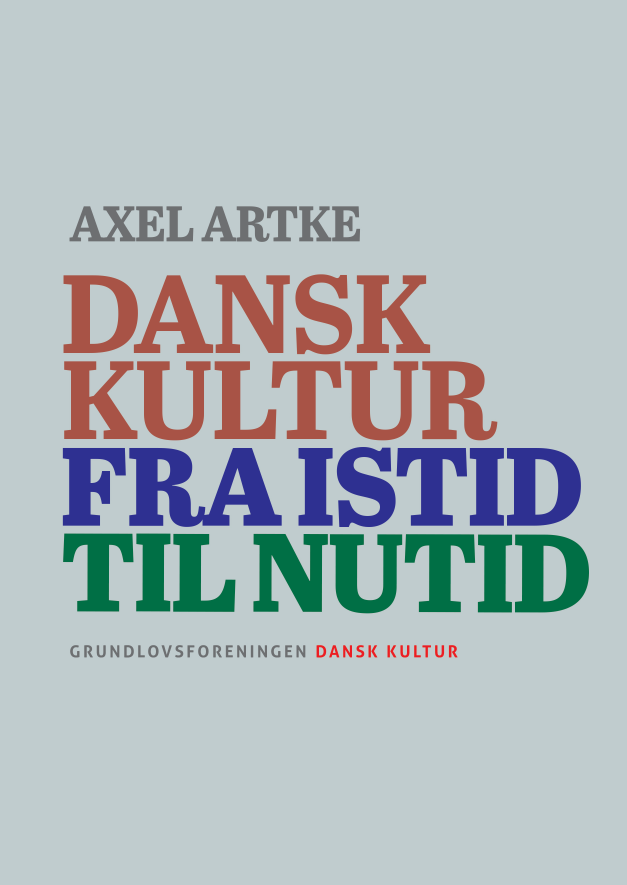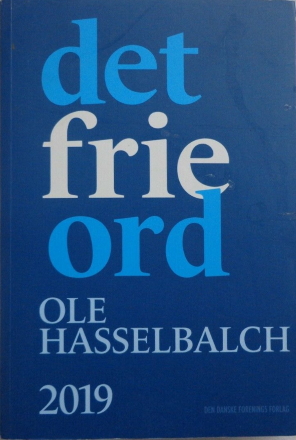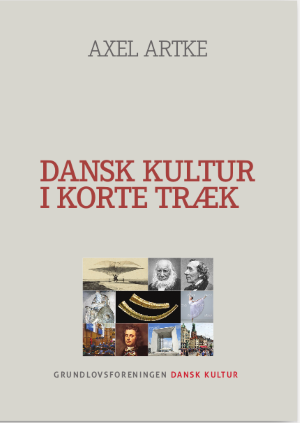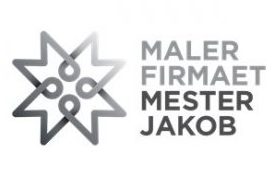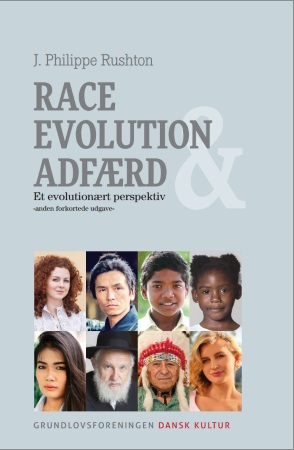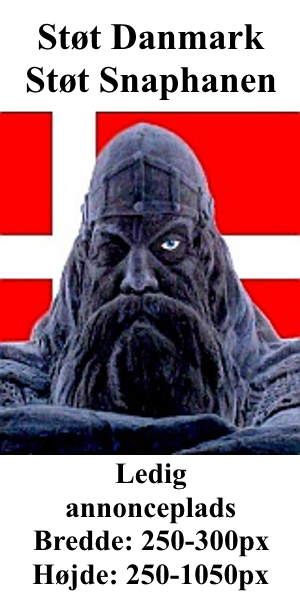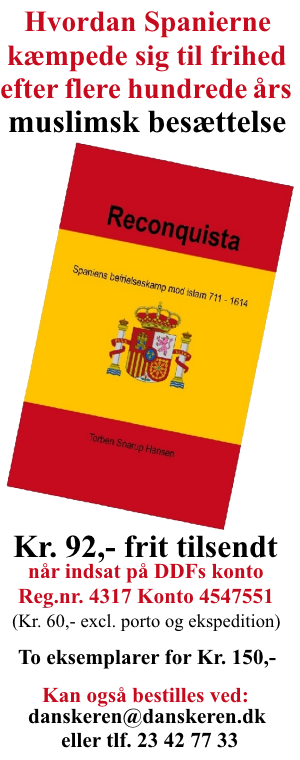The Organization of Islamic Countries (OIC) has entered Denmark’s election campaign. Yesterday it took issue with an election add from the Danish People’s party that features a 400 years old drawing of the Muslim prophet Mohammed and a text reading ”The right to free speech is a Danish value – censorship isn’t”.[..]Islamophobia is an intimidating and intellecually dishonest term because it wants to establish a false parallel to concepts such as racism and anti-semitism. Criticising or ridiculing an idelogy has nothing to do with attacking human beings.As Denis Prager has put it:
”The term is not ”Muslim-phobia” or ”anti-Muslimist”, it is Islam-ophobia – fear of Islam – yet fear of Islam is in no way the same as hatred of all Muslims. One can rightly or wrongly fear Islam, or more usually, aspects of Islam, and have absolutely no bias against all Muslims, let alone be a racist.The equation of Islamophobia with racism is particularly dishonest. Muslims come in every racial group, and Islam has nothing to do with race (…) If fear of an ideology rendered one racist, all those who fear conservatism or liberalism should be considered racist.” Northern Light
Ægteskabs-mønster ændret dramatisk efter 24-årsreglen
Ikke nogen helt ligegyldig oplysning lige nu. Prøv at sammenligne Jyllands Postens Ægteskabs-mønster ændret dramatisk efter 24-årsreglen, med Politiken, DR ´s og Ritzaus nedtonende notits Indvandrere finder ægtefællen her i landet. Og den er ikke på forsiden af Politiken ! I Metro Express siger Jelved at partiet vil afskaffe hele den ny udlændingelov. Vestager har altså en mere elegant måde at forære landet væk på!
63 pct. af unge indvandrere fra Tyrkiet, Pakistan, Somalia, Libanon og andre ikke-vestlige lande finder nu deres ægtefælle i Danmark. Og antallet af tvangsægteskaber er reduceret, fastslår professor. JP og Unge indvandrere finder ægtefæller i Danmark
fremtiden er dog landet for længe, længe siden, men de fleste – og især da ikke de hovedskyldige, de Radikale og ligesindede, – opdager det bare ikke før den detonerer om ti- tyve år. Politisk tæft er viden og erfaring kombineret med fantasi. De ejer ingen af delene. Forbrydelse eller dumhed? Historien afgør det, hvis der er nogen der tør skrive den til den tid:
The Flemish islamologist professor Urbain Vermeulen is very clear about this: “In thirty to forty years the region ranging from the North of France Lille – Roubaix – Tourcoing to Amsterdam will be one Islamic enclave. Flanders and Brussels lay in the centre of it. In twenty years Brussels will be the largest Maghreban city outside of the Maghreb. (…) Our society will be destabilised. Muslims will continue to launch problem after problem, increase their demands and they will determine the public life. This may be the end of the mainly European civilisation”.
Belgium: Eurabization Report 2007 by Filip Dewinter
I øjeblikket synes danskerne mest optaget af brød, skuespil og den bestikkelse, der kaldes velfærd. Indfor en fremtid, hvor vi tiltagende kommer til at behøve politikere med format, har Villy Søvndahl lige lovet bedre lokummer på skolerne og 2 lærere i hver klasse. Tilgiv mig jeg, står af et øjeblik……………
Lorenzo Vidino : Current Trends in Jihadi Networks in Europe
The terrorist related events that took place during the summer in Europe – the doctors’ plot in Great Britain, the dismantling of various cells in Italy, Austria and Spain, and, finally, the September arrests in Germany and Denmark – have confirmed that Europe is a key staging ground for jihadi activities. Although large differences exist from country to country and within various subgroups in the ever-evolving underworld of jihadi networks in Europe, it is possible to identify some current trends that, in one way or another, are common to the whole continent.
Independent, or Part of a Network
During the last few years, commentators have been fascinated with homegrown networks in Europe and, clearly, small groups of European-born, self-radicalized, violence-prone Islamists have sprung up in most European countries. Yet, the panorama of jihadi networks in Europe is quite complex and, for a more accurate analysis, could be described on a continuum. At one extreme, one can identify quintessential homegrown groups such as the Hofstad Group in the Netherlands: small domestic clusters of radicals that have developed no ties to external groups and act in complete operational independence. At the opposite side of the spectrum are cells that respond to the traditional model used by al-Qaeda-affiliated groups in the 1990s: compartmentalized cells inserted in a well-structured network and subjected to a hierarchy whose heads are often outside Europe. That is the model to which various cells of the Algerian GSPC (today Al-Qaeda in the Islamic Maghreb) belong.
In between these two extremes, there is a whole spectrum of realities, positioned according to the level of autonomy of the group. The most recurring model seems to be that of the cell dismantled by Danish authorities on September 4, 2007: a small group of young men, most of them born and/or raised in Europe, who knew each other either from the neighborhood or from the mosque. Their radicalization took place in Europe and only one or two members of the group traveled out of the country (Pakistan, in this case) to link up with foreign-based, well-structured groups ideologically or operationally affiliated with al-Qaeda. The knowledge acquired by the cell after this linkage obviously makes it more dangerous.
Traveling for Jihad: Primary and Secondary Fields
In contrast to the situation before the September 11 attacks, today most European jihadis do not travel out of the continent for training or to fight. Nevertheless, a small but significant number of them still opt for short stints in places where they can join training camps or guerrilla units. Pakistan/Afghanistan and Iraq are the two primary destinations. The former seems to attract recruits mostly from Northern Europe (Great Britain, in particular), while militants from Spain, Italy and France seem to travel mostly to the latter (El Periodico, May 6; Le Monde, December 16, 2004).
Noteworthy is the presence of European militants in two lesser known fields of jihad: Somalia and Lebanon. A few dozen European volunteers have been arrested by Ethiopian and Somali governmental forces among the Islamic Courts Union’s (ICU) fighters since December 2006. Several of these militants possess Scandinavian passports, and, according to intelligence sources, is considered the hub for the flow of money from Europe to the ICU (Sveriges Radio, January 30). Italian authorities have also monitored the visits of several ICU-linked preachers who are traveling to various Italian cities in order to fundraise and recruit among the country’s Somali population (L’Espresso, February 5). Reportedly, Swedish and British fighters were killed by U.S. missiles and Somali army operations (BBC News, June 3). A smaller number of Western volunteers, mostly from Denmark and Australia, have allegedly fought with Fatah al- in the Nahr al-Barid refugee camp in Lebanon (The Australian, September 13).
The Muslim Ghetto Subculture: Jihad and Rap
Europe today is witnessing the growth of a disturbing new subculture that mixes violent urban behaviors, nihilism and Islamic fundamentalism. Many young, often European-born Muslims feel a disturbingly intense sense of detachment from, if not sheer hatred for, their host societies and embrace various antagonistic messages. While some turn to Salafism, others adopt an indefinite blend of counter-cultures, ranging from hip hop to Islamic fundamentalism. Many youngsters from the Muslim-majority ghettoes of various European cities adopt several behaviors typical of Western street culture, such as dressing like rappers, smoking marijuana and drinking alcohol, yet watching jihadi videos and having pictures of Osama bin Laden on the display of their cell phones [1]. Any individual who attacks mainstream society becomes a hero to these teens, be it Abu Musab al-Zarqawi or the late American rapper Tupac Shakur.
This hybrid street culture is particularly influenced by African-American gangster culture and music. Bands such as Fun-da-mental and Blakstone in the United Kingdom, Medine in France, and Zanka Flow (Moroccan-based, but hugely popular in the Netherlands) combine radical Islamic concepts with hip hop sounds, jargon and attitudes. An aspiring star in the jihadi rap underworld is Mohammed Kamel Mostafa, the son of former Finsbury Park imam Abu Hamza, who has recently formed a rap duo called Lionz of Da Dezert. Using the stage name of al-Ansary, Mostafa raps about jihad and killing infidels. “I was born to be a soldier,” read the lyrics of one of his songs. “Kalashnikov on my shoulder, peace to Hamas and Hezbollah, that’s the way of the lord Allah. We’re jihad. I defend my religion with the holy sword” (Agence France-Presse, March 1, 2006).
While the phenomenon affects only a minority of European Muslims, its dimensions and repercussions are more than noteworthy. In London, city officials are worried about the growth of an extremely violent gang commonly known as the Muslim Boys. Operating in the southern areas of the British capital, the gang is composed of several hundreds of members and is active in criminal activities ranging from robberies to drug trafficking. The members of the gang are mostly British-born black youth originally from the Caribbean or Africa who converted to in British penitentiaries and bond over their newfound faith (Evening Standard, February 3, 2005). Yet, their interpretation of is perverted. The gang members do not respect the most basic tenets of , and their appearance and slang more closely resemble that of American ghetto culture than that of practicing Muslims. Tellingly, a gang member admitted to a reporter from the Evening Standard: “I pray twice a day: before I do crime and after. I ask Allah for a blessing when I’m out on the streets. Afterwards, I apologize to Allah for what I done [sic].” The gang is also involved in “forced conversions,” compelling black youth at gunpoint to convert to and join them; two years ago, they executed a 24-year-old for refusing to convert.
The Expansion to the Countryside
Radical in Europe has traditionally been an urban phenomenon. Muslim immigrants have historically settled in large and mid-size cities and, as a consequence, radical mosques and jihadi activities have also been largely confined to urban settings. Yet, during the past few years, there has been a noticeable expansion of radical activities to rural areas. The phenomenon is particularly evident in southern European countries, where large numbers of North African immigrants are employed, seasonally or permanently, in agriculture. Wandering imams, often linked to Tablighi Jamaat and small makeshift mosques run by radicals, have popped up in small country towns and villages in Spain, Italy and France, spreading Salafism among the local Muslim communities. Taking advantage of the absence of other mosques and the limited surveillance of the small local police forces, Salafists have managed to establish a presence in rural areas of Piedmont, Campania, Provence and southern Spain [2].
In some cases, Salafist networks have taken advantage of the isolation provided by the countryside to create small fundamentalist communes, as in Artigat, a bucolic village of less than 1,000 residents in the French Pyrenees. When French authorities dismantled a Toulouse-based network that was smuggling volunteers to Iraq, they uncovered links to a 60-year-old Syrian man who was leading an Islamist commune in Artigat (Le Parisien, February 15). Living completely isolated from the outside world, the commune’s five families lived under a strict self-imposed Islamic code and preached a radical interpretation of to their children and to the visitors who would come occasionally from the city (mostly Toulouse) to spend time in a “pure Islamic environment.”
Eastern Europe?
While not already an established trend, there are indications showing that radical is spreading, albeit at a slow pace and with significant differences from country to country, to Eastern Europe. The presence of radical networks in Bosnia, many of them leftovers from the conflict of the 1990s, is well known. Although less grave, Wahhabi influence, propagated mostly by a wide network of Saudi-sponsored mosques, is on the rise in other areas of the Balkans with significant Muslim populations such as Albania, Kosovo and Serbia’s Sandzak region (B92 Radio Serbia, June 6, 2006).
Various Islamist groups have been reported to be actively spreading their propaganda to other Muslim populations throughout Eastern Europe. Hizb-ut-Tahrir, for example, organized a large conference in Ukraine in August, targeting mostly Crimean Tatars (Kommersant-Ukraina, August 13). Yet, even countries with little or no native Muslim population have seen a tiny, yet growing, presence of Islamist activities, particularly among their Arab and Pakistani student population. During the last few years, authorities in Hungary, Romania and Bulgaria have arrested individuals who were either promoting radical through websites and publications or funneling money to terrorist organizations. Additionally, in October 2006, Czech authorities issued a terror alert after uncovering information of an alleged plot to kidnap and kill Jews in Prague (Der Spiegel, October 6, 2006).
The attractiveness of Eastern European countries for jihadis has increased significantly with the inclusion of many of them in the European Union. Some Eastern European countries, with their understaffed and often corrupt intelligence and law enforcement agencies, easy access to black market weapons and forged documents, and possibility of traveling to Western Europe without border controls, can constitute ideal bases of operation. An interesting related phenomenon is the suspicious spike in marriages between Bulgarian and Romanian women and North African men reported in Italy and Spain immediately after the entrance of the two Eastern European countries in the European Union. In all likelihood, the majority of these artificial marriages involve individuals with no connections to terrorism who simply want to acquire a European passport to stay and work in Western Europe. Nevertheless, the possibility that terrorists could use the same scheme should also be considered.
Conclusion
Jihadism is a global movement whose characteristics mutate rapidly. While today some of the abovementioned trends are still in a developing phase or can be noticed only in some European countries, it is likely that they will be replicated with greater intensity and in more countries in the near future.
Notes
1. The information is based on author’s observations throughout Europe.
2. The information is derived from a variety of sources, including: the Indictment of Abdelillah El Kaflaoui, Tribunal of Turin, May 7, 2005; Libero, October 18, 2007; author’s private intelligence sources.



